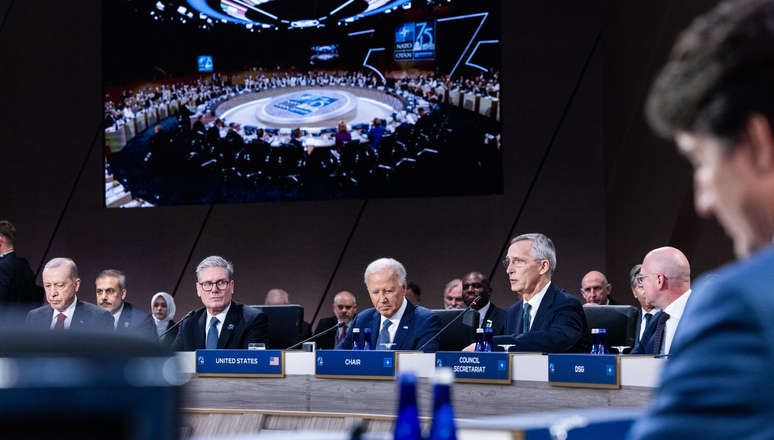On Wednesday 17 July, the North Atlantic Council approved the 2025-2029 Common Funding Resource Plan (CFRP). The gravely altered security environment since Russia's full-scale invasion of Ukraine in 2022 has led NATO to reset the strategic direction of the Alliance, and these decisions have direct resource implications for NATO common funding. The 2025-2029 CFRP gives an overview of the common-funded resource demands over the next five years, confirming the medium-term feasibility and affordability of previously endorsed and future common-funded programmes and requirements.

Meeting of the North Atlantic Council at the level of Heads of State and Government at the NATO Summit in Washington, D.C., where Allies took decisions related to NATO Common Funding, 9-11 July 2024.
In approving this Plan, Council agreed the 2025 ceilings for the common-funded Military and Civil Budgets, as well as for NATO's Security Investment Programme, allocating EUR 4.4 billion in funding. This funding is mainly aimed at strengthening NATO's deterrence and defence, providing core military capabilities, fulfilling responsibilities in Alliance operations and missions, and enabling NATO's consultation, and command and control, processes. Along with decisions taken at the recent Washington Summit, the Plan includes funding for priority activities in support of Ukraine, such as NATO Security Assistance and Training to Ukraine (NSATU) and the NATO-Ukraine Joint Analysis, Training and Education Centre (JATEC).
Common funding is a powerful expression of equitable burden sharing and resolve amongst Allies.






